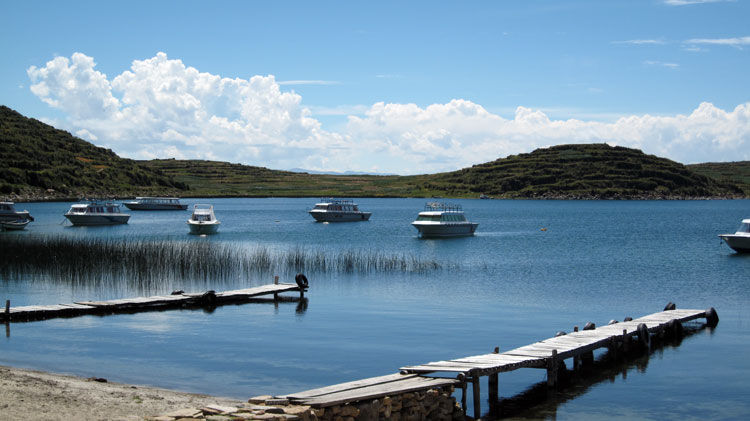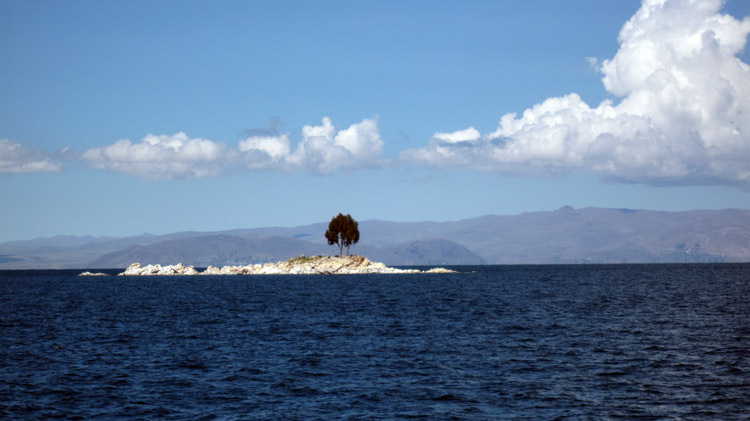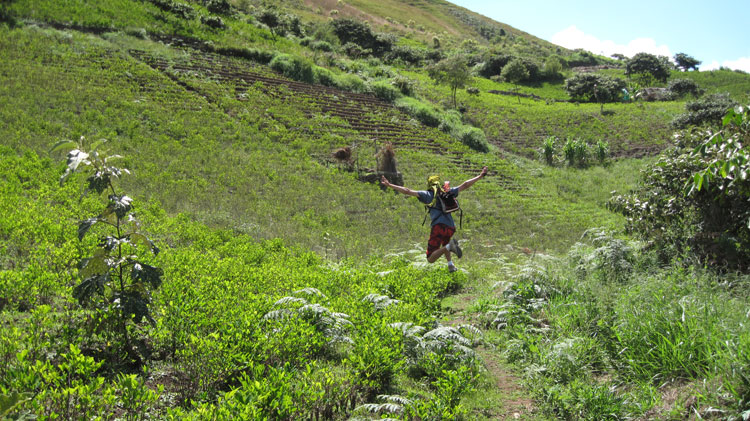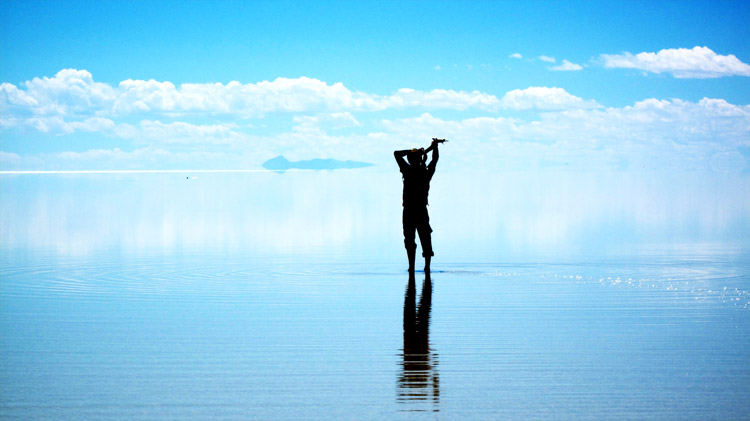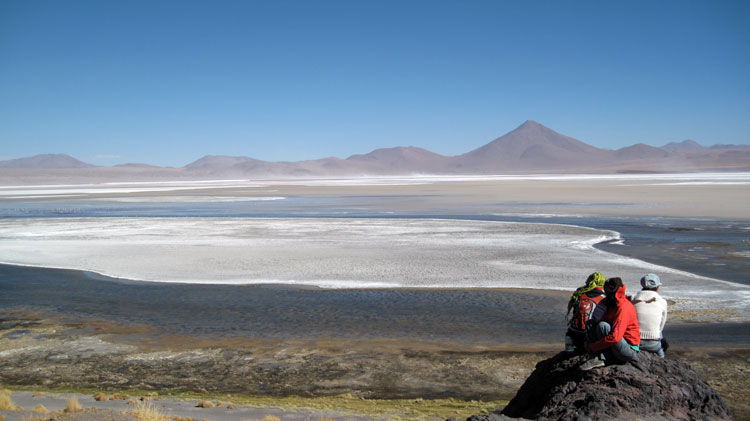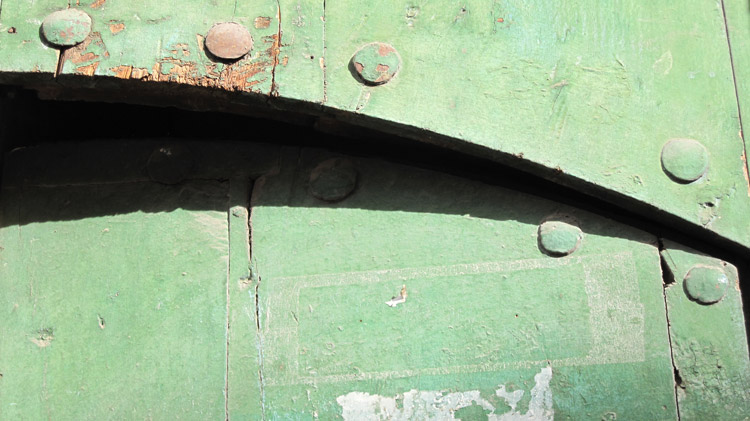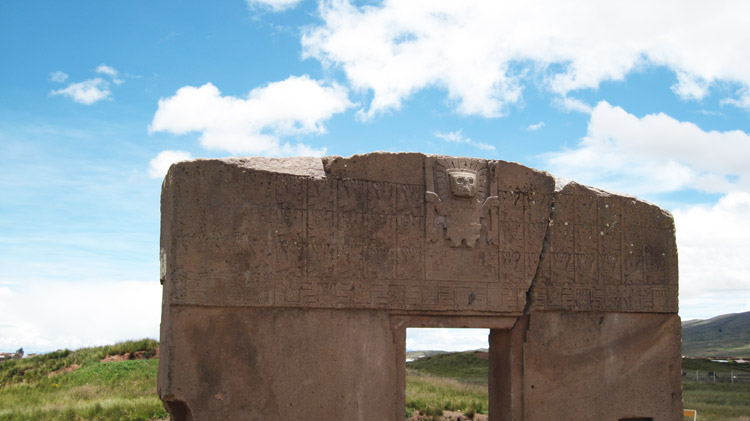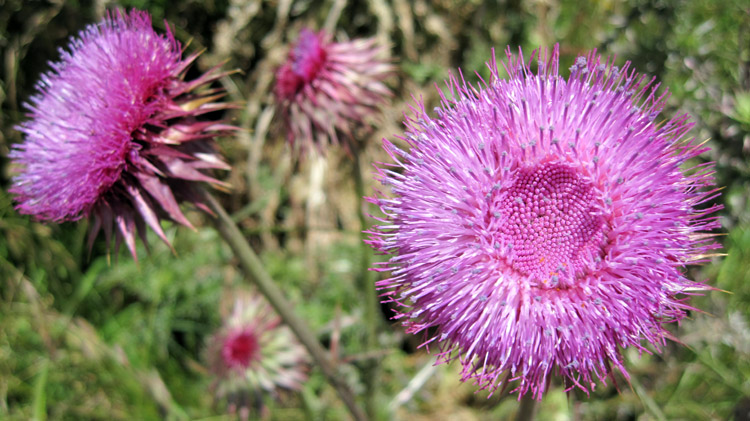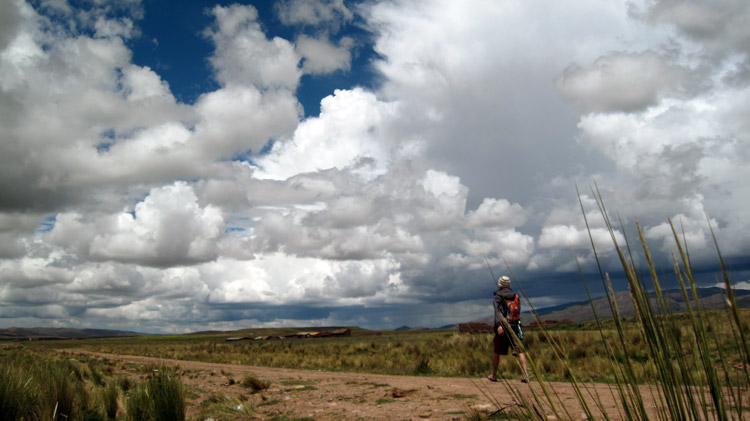After a much needed night’s rest on Isla del Sol (replete with some evening revelry with tea and conversation at the “tavern” with fellow travellers), it was duly time to take the 2 hour boat ride back to Copacabana for the scheduled bus to cross into Peru. Although this drifting life has some detractions, not for a moment will there be regret for seeing the scenes and cultures visited. All the splendors of Bolivia will forever live on in memory and lore to be retold.
The journey through Bolivia has lasted a month now, longer than I had planned but unexpectedly rewarding in many regards; including one unnerving experience where one of the girls got a horrible case of dysentery and I had to help her to the “hospital”. I felt very uneasy about leaving her at the clinic, but was re-assured by her that the best place for her was near the doctors and that I should go catch my bus. With that, I made a mad dash down the hill just in time to hop on the bus bound for Puno, Peru.

The immediate disparity between Bolivia and Peru is rather salient. For two countries that border each other and share so much commonalities in culture and history, the differences between them are quite astonishing: foremost, being that Peru is noticeably more affluent than Bolivia, which utterly seems quaint and behind in so many senses. Much of the wealth disparity is due to the trouble political history and misrule of Bolivia. At the same time, it was more comforting as a traveler to be on paved roads and less makeshift accommodations. Peru is well shy of luxurious itself, but by comparison things are three times more expensive than Peru. The people are just as amicable and ready to mingle with the foreigners, though I’m sure there is room enough to admit that some must be jaded by the massive influx of tourists trampling all over their cities, all the wild behaving badly.

Another interesting observation is the quality of the vehicles drastically improved. Whereas poor Bolivia (it is the poorest of all South American countries) had to content itself with 3rd-rate, used and decommissioned scrap vehicles purchased on the cheap from industrial countries, Peru had proper modern buses that were fully functional. The journey from Copacabana to Puno was on a chartered Peruvian bus with working lights, air conditioning, and actual seat belts in contrast to Bolivia. The majestic journey rounding the rim of Lake Titicaca, passing mostly rustic settings was simply beautiful beyond words. Towards the end, we passed a series of low farms, and, gazing out the yellow tinted window was akin to viewing a Monet painting in motion.
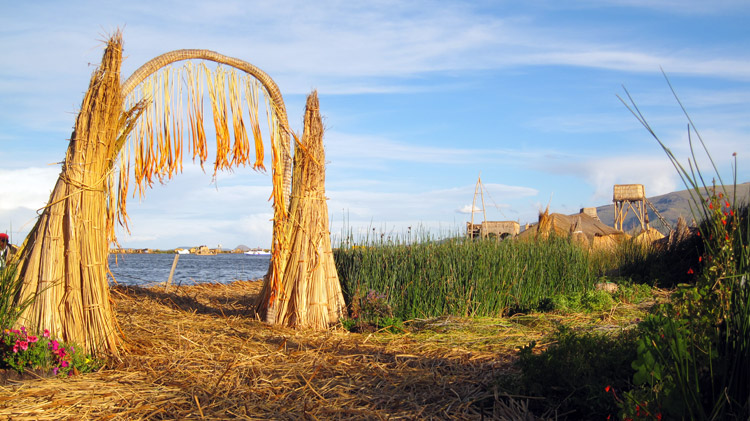
The plan was to go immediately from Puno to Uros, the famed, ancient floating islands of Lake Titicaca, built by Aymara inhabitants who escaped to the lake to avoid conquest by the Incans. They’ve aptly adapted themselves to surviving on this highest of lakes by making use of every resource availed them. Complete villages are built with reed stalks on a floating island, itself made completely from reed stalks. The local people have their traditional village government structure still intact, and mostly live as their ancestors have for 700 years off the bounty of the lake. Their local customs, crafts-work, song and dance were out in full display for the passing tourists. Despite the warm welcome and fanfare, one couldn’t help but think the whole scene a bit contrived as their culture seems to have been commercialized as a living artifact of times gone; and to some extent their whole culture exploited to this end. I’m not sure how much of it is authentic, and how much a show as their main economic engine is now dependent on tourism.

Still, people do live here: they cook, launder clothes, and fish off their little floating abodes. The
indigenous tour guide (who actually lives on the island) says that conditions have improved a lot. In the high altitude, the driving wind and rain used to cause constant destruction on their abodes, but at least now they have blue, plastic tarp to cover their roofs in the rain. And so their culture survives, and little toddlers and children run about in colorful clothing as the adults sell traditional crafts to the tourists. Some things do change.

The evening passed into dusk as we boarded one of Uros’ traditional reed boats, for 5 Soles of course. I suppose this had to be the highlight of the visit – to journey to an adjacent island and, well, be tempted to buy more trinkets. After bantering and fun haggling prices with the locals, we all left with our requisite pendants and weavings bound on the boat back to Puno. We stopped only long enough to wander the main streets of town and have a much needed meal before being packed on an over-night bus for Arequipa.


